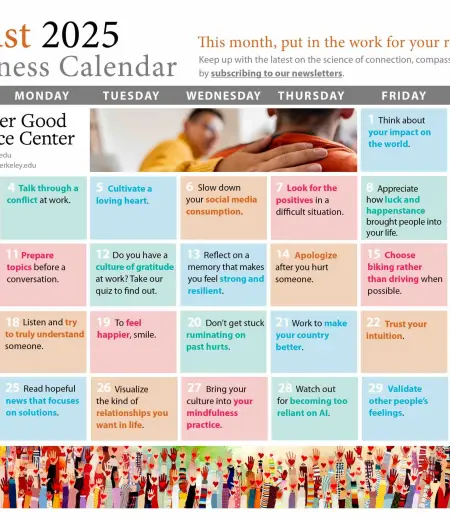Of all the policy changes that could help parents and caregivers, none is as morally intuitive, politically feasible, structurally possible, and economically smart as a paid family leave.
Morally: People should not have to go without income during those times when they need intense care, or have to give intense care to others. Politically: The vast majority of voters support the establishment of a policy. Structurally: Paid leave programs in various cities and states have demonstrated how to make it work. Economically: The data is clear that paid leave is good for individuals and the economy overall.
Yet here we are, a quarter of the way through the 21st century, and paid leave is far from universal in the United States. According to the U.S. Department of Labor, “only 27% of private sector workers in the United States had access to paid family leave through their employer and only 43% had access to short-term disability insurance through their employer.”
X

And a call for paid leave for all can’t be dismissed as some left-wing, Scandinavian fantasy. The United States is the only industrialized nation in the world without a paid leave policy.
I’ve been covering paid leave for over a decade and I still often find myself thinking WHY? HOW? And, most importantly, WHEN?
To answer these questions, I reached out to Orli Cotel, a longtime paid leave advocate who’s worked with PL+US: Paid Leave for the United States, Moms First, and others. We spoke about why women are still going back to work days after delivering a baby, why our friends and families are battling illnesses, or dying alone, because their loved ones have to go to work, and why we avoid seeking care for ourselves out of fear that we will lose a paycheck or our job altogether.
Elissa Strauss: Hi Orli! Thanks for chatting with me about the absence of a paid leave policy in the U.S. Tell me, how did you get into this work?

Orli Cotel
Orli Cotel: I’ve been in the advocacy space my whole career. I spent the first decade or so working on climate advocacy and then I had my first baby in 2014.
I had this experience that I think a lot of parents have for the first time, feeling like “I didn’t realize it was going to be this hard.” And if it was this hard for me, someone with a lot of privilege, with paid leave and a partner with paid leave, what could this be like for an hourly wage worker without paid leave? How would they get through it?
And so I decided to take some of the skills that I’ve learned in tackling huge problems on the climate side and figure out how we can win paid family leave for everyone in the U.S.
ES: I’m sure by now you’ve encountered many who had to get through a tricky illness or care moment without paid leave. Tell us a story or two of what you have seen.
OC: I have too many, unfortunately. One heartbreaking story that really stayed with me was about a mom who gave birth to a very premature baby on a Thursday, and had to be back at work as a server at Waffle House on Sunday. She went back to work, likely still bleeding, as most people are just a few days after childbirth.
This mom would work long shifts on her feet during the day, and then head to the NICU at night, and just sit by the incubator where her little baby was fighting for its life. She would sit there and cry and cry.
A lot of the conversation about paid leave too has focused on white-collar jobs and executives—part of conversations we have around breaking the glass ceiling. But we don’t talk enough about what it means to raise the floor. That’s why I worked on the campaigns to help win paid leave for hourly workers at Walmart, Starbucks, CVS, and more.
And there are millions and millions of people in America who aren’t even covered for unpaid job-protected leave. I spoke with a dad in New Hampshire who was working as a security guard. He had a shift the day his wife went into labor and he told his boss he had to drive her to the hospital. His boss said if he didn’t show up he would be fired. So he lost his job.
ES: You mentioned how the paid leave conversation often focuses on white-collar workers. It also often focuses on parents, and less on the need for paid leave during illnesses.
OC: I have personal experience with this one. My husband was diagnosed with cancer in June of 2020. It was the height of the pandemic, people were still washing their groceries and not speaking to other humans in person.
It was incredibly isolating and challenging, and we had paid leave. I can’t even understand what that would be like for someone who could not take paid leave to be there at that moment for their loved one. I needed to help him navigate the medical situation, find the best surgeons, help him recover from surgery, and take care of our little kids.
I also think about all the elders in our country who currently have no one around to care for them because their children and grandchildren do not have paid leave. More often than not, they are dying alone. That’s a truly heartbreaking failure of our system.
ES: Can you give us a brief history primer on how we became the only country in the world where these kinds of stories are common?
OC: One piece of the history that I think most people don’t know about is what happened after World War II, and how that impacted the real split between how paid leave emerged in European countries and never happened here.
The European population was decimated in WWII. There weren’t enough people to work in the factories and rebuild the cities. But they also needed to regrow their population—for women to have babies. Basically, women needed to be able to work and have families and so they created policies to support working women, including paid family leave and child care.
Meanwhile, the U.S. had the opposite problem. Our population didn’t significantly decline. We had male soldiers who were coming home and needed jobs. More women joined the workforce during WWII, but now the government felt like it needed to push women out to make room for men. And so, on purpose, they didn’t create policies that would incentivize women to stay in the workforce. In the case of child care, they ended a federal program.
There are other factors as well, things like higher unionization rates in many countries where there are robust policies.
ES: And now let’s fast forward to today when we are the only industrialized nation in the world without a policy…
OC: Yes, we say the only industrial nation, because really the only other nation that doesn’t have it is Papua, New Guinea.
There are now 14 states that have statewide paid leave programs, and that’s great. But that means that there are still 36 states that don’t have anything.
We do have a federal law called FMLA, the Family Medical Leave Act, which was passed in 1993 and is basically just unpaid job projection if you need to take time off to care for a baby, a family member with a medical condition, or yourself if you have a medical condition. But in addition to being unpaid, it is also very restricted—44% of the entire workforce doesn’t even qualify.
ES: How did we get stuck with this half-assed law?
OC: My understanding is that advocates originally wanted it to be a paid law, but did not think that they were going to be able to pass it so instead decided to really push for an unpaid job protection law in the hopes that they would get the foot in the door and then expand it to be paid leave afterwards.
And what’s interesting is that it is not only unpaid, but also has us thinking that 12 weeks of paid leave is the standard, or a reasonable amount, when it is completely arbitrary and also inadequate. All the science shows that you really need at least six months of leave, and the earliest version of this legislation was for 26 weeks of leave. It just got whittled down to 12 weeks in negotiations. Meanwhile over in Canada, they recently expanded their leave from 12 months to 18 months.
ES: And then 30 years later and we still don’t have a paid law…why?
OC: Well, first of all look at the makeup of Congress today. Half of the Senate is over 65. I don’t think they understand the economy in which young people are raising families today.
Many of them had wives stay home when they were raising their children, and so they’ll think things like: People should just save money if they want kids. They don’t get the conflicting economic stressors like housing costs, health insurance costs, and student loan debt.
And then there’s the fact that our society has a fundamental lack of respect for moms, whether they’re in the paid workforce or not. As long as this issue is placed in that cognitive bucket of “women’s issue”…it’s not going to move anywhere. This is why a lot of the work that I do is really around organizing the business community and trying to place this issue into an economic frame to show how much having paid leave can help our economy.
“Our society has a fundamental lack of respect for moms, whether they’re in the paid workforce or not. As long as this issue is placed in that cognitive bucket of ‘women’s issue’…it’s not going to move anywhere”
―
Another reason we haven’t seen progress fast enough is that there’s just not enough support from philanthropy. We need more funding to really be able to swing for the fences.
ES: How do you feel about the incremental progress we have seen city by city and state by state?
OC: A good federal bill would clearly be the best solution. And it would be the simplest solution for big businesses who wouldn’t have to navigate employees living in 50 different states that someday could have 50 different laws.
But in the meantime, the wins at the state level are incredibly inspiring and energizing, and they’re actually bringing paid leave now to people who need it. If we just focus on the long-term vision of a federal bill, it’s going to take a long time.
ES: What do we see happening in those states?
OC: The states are giving us lots of clear data that paid leave is a win-win-win. It helps businesses, it helps families, and it is good for public health.
We are also increasingly seeing people working across the aisle to make paid leave happen. It’s happening in purple states now like Pennsylvania, and I hope red states follow suit.
ES: Yeah, as I mentioned on top, polling suggests it’s a pretty popular issue, across party lines.
OC: Yeah, on the voter side everybody wants it.
But there is a difference in how Republicans and Democrats are approaching the solution. Republicans are offering things like tax credits or allowing people to borrow from their own social security to fund their leave. Or a proposal to give special savings accounts to people in their late 20s and 30s dedicated to paid parental leave, as if young people have tons of extra money to save. These proposals are far from adequate.
Democrats are proposing comprehensive paid leave insurance programs, which has been proven to be the best way to meet the need.
ES: Which paid leave structure is working in the states where it exists?
OC: All 14 states have done things the same way, and it’s working well. They run paid leave through a statewide insurance program. Sometimes employees pay a small premium, and other times employers pay it, and most commonly it is split. For the employee, it can be a few dollars a week, so it isn’t much. That goes into a pool of money that funds leave for everyone when they need it. And it’s important to note that it’s not just parental leave—it also funds leave to care for an aging parent or a family member with a serious illness like cancer.
ES: What can readers do to help make paid leave a reality for everyone?
OC: Vote on these issues, and also let your elected officials know that you are going to vote for them based on this. Email them and tell them that.
Also, we need more young lawmakers, more parents, and more caregivers—and that doesn’t just mean women, but electing more women helps. We need more parents to run for office, and canvas on behalf of other parents.
Also, get loud about this issue. Don’t just complain to your group chat. Get loud in a public way, and if you post on social media, tag your representatives.
We need more folks to get involved with the organizations that are really leading the charge on this, and there are tons of great organizations out there that are fighting for this—including Moms First, Chamber of Mothers, Paid Leave for All—whether it’s at the state level or at the national level. There are opportunities to go and meet with members of Congress and talk with them or with your local state House.
The other way to get involved that can feel more accessible to folks is to advocate for good paid leave policies in your workplace. I have put together a bunch of training materials for anyone who wants to do that. My DMs on LinkedIn are always open if folks want extra support or tools, benchmarking data, or even just a pep talk.
I think at this point we have a lot of research on this, a lot of white papers and reports, and I’m not sure we need more. We need people to make noise.
ES: I want to end by bringing us to a personal place. The absence of universal paid leave doesn’t just impact us during the time we do, or don’t, get leave. It sends this overall vibe that we should be able to handle all care responsibilities without external support, and if…when…we can’t, it is because there is something wrong with us.
As a freelancer, I have never had the help of paid leave, not after the birth of my children, and not while caring for a close family member during an illness. Honestly, I had to hold back tears a few times during this conversation because I’ve realized just how much I have internalized this idea that I should have been able to handle it on my own and the sheer exhaustion or financial worries were all on me.
OC: I 100% agree. Let’s be clear: You can’t solve systemic problems with individual solutions. And yet parents are told that if we can’t figure it out, if we can’t make ends meet, if we feel overwhelmed, that’s our fault. This starts with paid leave and it extends to the child care crisis, to the lack of after-school facilities, to the expensive logistical mess that is summer time for working parents, to the lack of affordable college. There are so many parents I know who feel like if they can just create the perfect Excel spreadsheet, they’ll be able to manage it all, and yet it still doesn’t work. And that’s by design. If we’re overwhelmed, exhausted, and alone, then we’re not in the streets demanding change.
“You can’t solve systemic problems with individual solutions. And yet parents are told that if we can’t figure it out, if we can’t make ends meet, if we feel overwhelmed, that’s our fault.”
―Orli Cotel
We live in the richest nation on earth and also one of the loneliest. People start their parenting journey feeling alone, and this leads to serious Mental health problems. The New York Times just had an article a couple of months ago about a steep drop in mothers’ Mental health—and this was from research involving nearly 200,000 mothers. The lack of paid leave clearly plays a part here: 1 in 4 new mothers is forced back to work within two weeks of giving birth, still bleeding from childbirth. This is unconscionable.
We need to fundamentally reimagine what it would look like to support parents and caregivers. This starts with paid family leave, but it could be so much more. In the Netherlands, postpartum care includes home visits from a maternity assistant for the first eight to 10 days after birth, where they provide medical checks, breastfeeding advice, and even do light household chores and cleanup so the mother can focus on healing and bonding with her baby—and this is all paid for by standard health insurance.
Here, we’re telling the mom, “we don’t care if you literally can’t walk and haven’t slept and have stitches in your vagina and are leaking milk out of your breasts, get back to your job.” Is it any wonder that we have a long-term maternal Mental health crisis?
This article was originally published on Made with Care. Read the original article.













